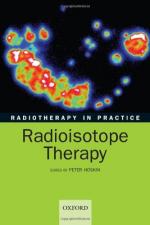|
This section contains 974 words (approx. 4 pages at 300 words per page) |

|
Radioisotopes, containing unstable combinations of protons and neutrons, are created by neutron activation that involves the capture of a neutron by the nucleus of an atom. Such a capture results in an excess of neutrons (neutron rich). Proton rich radioisotopes are manufactured in cyclotrons. During radioactive decay, the nucleus of a radioisotope seeks energetic stability by emitting particles (alpha, beta or positron) and photons (including gamma rays).
The history of radioisotopes in microbiology and immunology dates back to their first use in medicine. Although nuclear medicine traces its clinical origins to the 1930s, the invention of the gamma scintillation camera by American engineer Hal Anger in the 1950s brought major advances in nuclear medical imaging and rapidly elevated the use of radioisotopes in medicine. For example, cancer and other rapidly dividing cells are usually...
|
This section contains 974 words (approx. 4 pages at 300 words per page) |

|


